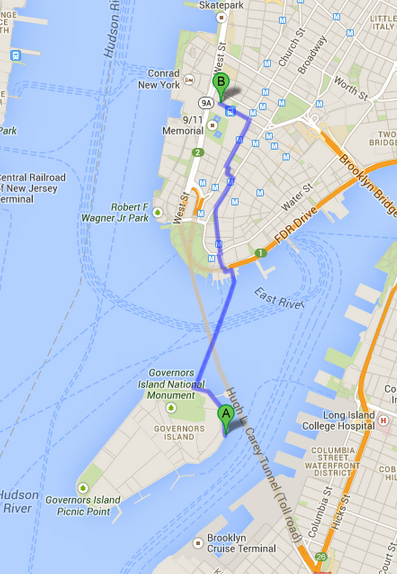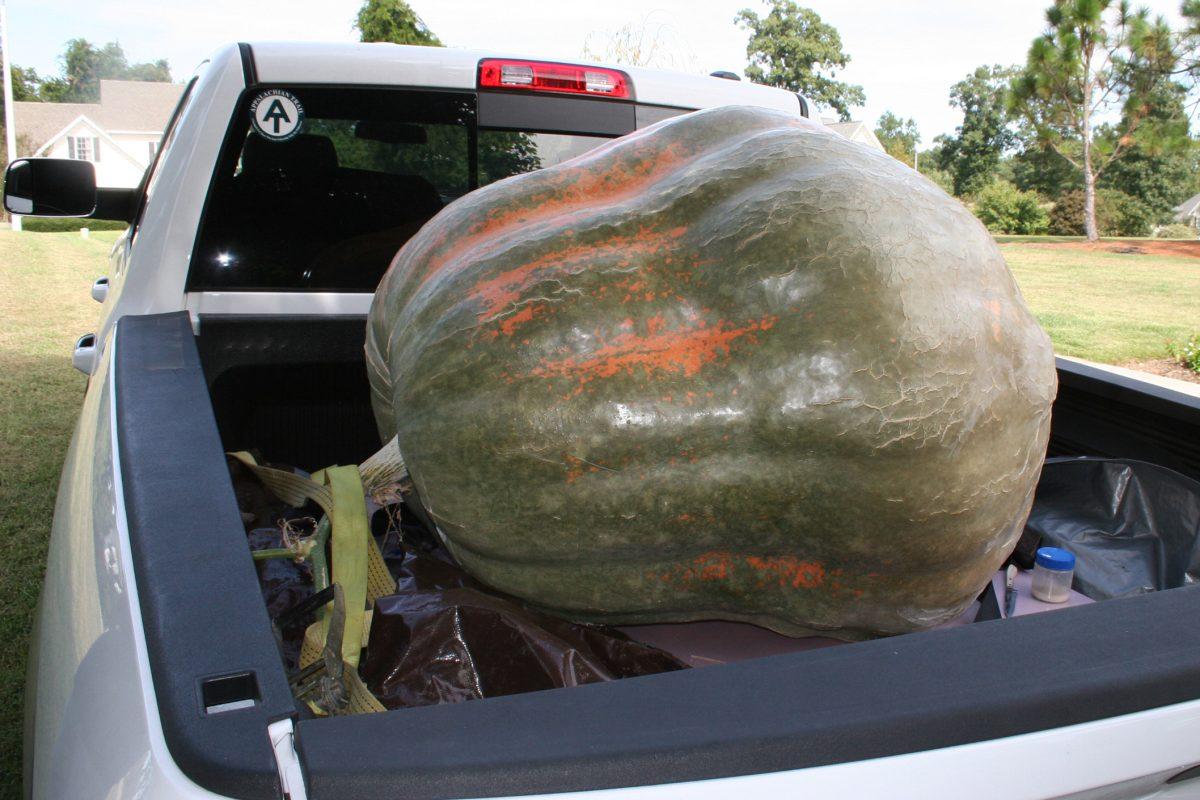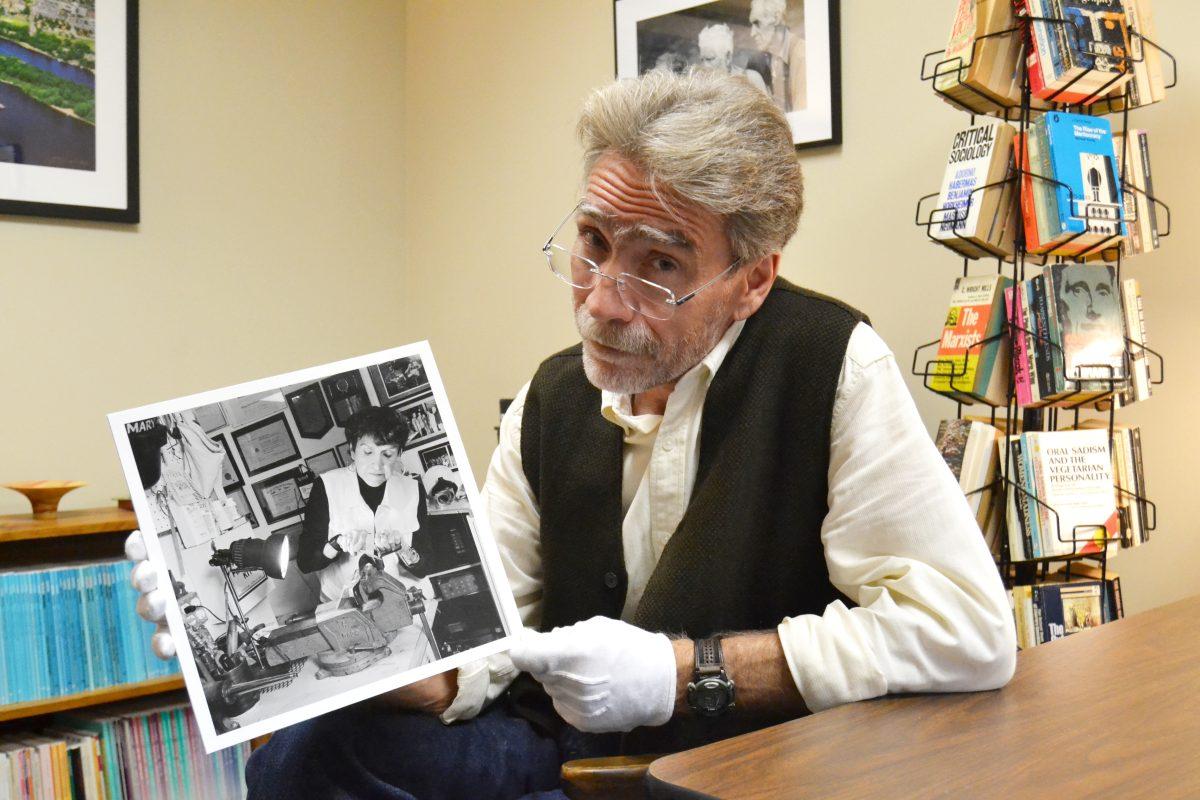The Sacrifice
Stephen Siller, father of five children, each under the age of nine, and a firefighter part of an elite squad in Brooklyn, was driving home early from work, apparently to Staten Island, planning on spending the day playing golf with his older brothers. It was a beautiful, perfect-for-golf, September day—Sept. 11, 2001, that is.
He heard from his scanner that the second Twin Tower had collapsed. The first tower’s collapse was not a mistake—the United States was under attack.
Siller called home and told his wife that he loved her and that he would see her later—and had her inform his brothers the golf game would have to take a rain check.
He turned his car around and headed to the firehouse.
When Siller got to the firehouse, however, his fellow fighters had already left for New York City. The lone firefighter loaded his gear into the back of his truck and drove to the Brooklyn Battery Tunnel, which would lead him to the city, but authorities had already barricaded it.
Siller reasoned a police officer to let him park his truck on the side of the road. After some deliberation, the officer allowed him to do so.
The firefighter got out of his truck and strapped on his 60 pounds worth of gear. For three miles, he ran through the tunnel, doing his best to avoid oncoming traffic.
Spotting a passing fire truck that was headed toward the World Trade Center, Siller jumped aboard, made it to the city and reported himself in with the chief at the towers.
He was never seen again.
The teacher
This was the story Lisa Bender, a middle school language arts teacher and N.C. State alumna, heard on NPR while driving to work.
“I thought, ‘This is exactly what I want to teach my students all the time, teach them about sacrifice and doing the right thing,’” Bender said.
After NPR ran the story, it discussed a foundation that Siller’s family had started, Tunnels to Towers.
The run “retraces” Siller’s footsteps through a three-mile course in which people honor him and the rest of the heroes who sacrificed themselves in the wreckage of the World Trade Center.
“I got home, Googled ‘Tunnels to Towers’ and looked through their website—but I couldn’t find what I wanted,” Bender said, “So I clicked the ‘Contact us’.”
Bender explained via email who she was and wondered if those in charge of the foundation would let her have a Tunnels to Towers run so she could teach her students about heroism.
The Reply
“To be perfectly candid, I had no idea what I was doing,” said Bender. “When you send a message to ‘Contact us,’ you never know if you will get an automated message, but I got a long email from Stephen’s older brother George.”
In his reply, George said that he could not believe that anyone outside of New York City would care enough to want to have an event like Tunnels to Towers to honor his brother.
“They were incredibly touched,” Bender said.
After George voiced his appreciation, he sent Bender information on how to put together a run. He offered his cellphone number and told her not to hesitate if she needed to call him.
“I’m not a runner, it was more of a ‘Wouldn’t it be cool?’ moment,” said Bender. “But I was too foolish to know I couldn’t do it or that it couldn’t be done in three months.”
The first event
Bender got to work organizing the event, which would take place at the middle school where she worked. The school held an assembly on Sept. 11, 2009, eight years after the tragedy.
George and his sister came for the first event, which, according to Bender, had the kids walk or run a three-mile course in a neighborhood adjacent to the school’s property.
“The children ran with their backpacks like it was fire gear,” Bender said.
She organized the run by recruiting volunteers from the school community. The next day, Bender hosted a run in Wake Forest, which featured about 300 people, most of whom were geared up firefighters.
“It was very much a grassroots beginning, and, like I said, I had no idea how to do this,” Bender said. “It was the first location outside of NYC.”
The expansion
For the 10th anniversary of Sept. 11, Tunnels to Towers representatives decided to expand the foundation and to host more runs outside of NYC.
Those in charge chose about 15 locations, which they based on demographic and media market.
Eventually, Bender left her job at the middle school and became the assistant regional director and the education liaison dealing with the Eastern United States.
“The proceeds from our runs are used with the Gary Sinise foundation,” Bender said. “We partner with them to build homes for triple- and quadruple-amputees through a program called Building for America’s Bravest.”
Building for America’s Bravest works to build “smart homes,” technologically advanced houses for triple- and quadruple-amputee veterans who return from Afghanistan.
According to Bender, the team has chosen about 25 locations in the states to build homes.
“To be able to build a home, not as repayment, but to insure that these men and women can live independently the way that we live independently because of them is huge,” Bender said. “That opportunity gives somebody the gift of independence. Our goal is to return as much of the proceeds to building these homes.”
The triangle
In an effort to tap into the university communities, Tunnels to Towers is spreading, according to Bender, to a more central-to-the-Triangle location. Bender refers to this as Tunnels to Towers Triangle.
A 5K run will take place on Saturday, Sept. 21, at the PNC Arena in honor of Stephen Siller and all the other first-responders.
Registration for the run and walk is open on their website, www.t2trun.org and is open until midnight on Sept. 18. It will be $25 for adults and $20 for children. Special rates are available for firefighters, law enforcement officers, E.M.S. and military personnel. It starts at 9 a.m.
The museum
According to Bender, another exciting part of the run is that the first mobile 9/11 museum will be available for viewing from Tuesday, Sept. 17, through the day of the PNC arena run.
“A really nice complimentary piece to the run is the 9/11 memorial,” Bender said. “It’s the first mobile museum, included are pieces of steel that travel the country that often are displayed at fire departments.”
The mobile museum is under construction in Mooresville and is set to be a 53-foot long, 18-wheeler. Inside will have five rooms, three depicting the World Trade Center in before, during and after the attacks, the final two being dedicated to the America’s Bravest program and to Stephen Siller.
The mobile museum is set for unveiling Sept. 11, in Fayetteville. The exhibit will be free, but those involved encourage visitors to make donations to cover travel expenses.
“A first of its kind, the museum was prompted in large part because the Siller’s felt like in this mission to ‘never forget,’” Bender said. “9/11 is a very difficult subject to teach in school. [The museum] gives us that educational opportunity for families to talk with their children about what happened that day and how much the world we live in now was influenced by it.”
Bender explained that after its unveiling, the mobile museum is scheduled to tour various locations, so schools can sign up and bring their students.
“It’s like taking a classroom and a moment in history on the road and making it accessible for people anywhere,” Bender said.
The future
Though she has left the classroom to work for the foundation full-time, Bender said she still views Tunnels to Towers Triangle as an educative opportunity.
“I see Tunnels to Towers Triangle as being an opportunity to educate and remind people how indebted we are to those firefighters, law enforcement, E.M.S. and military because they make this such a great place to live,” Bender said. “We all have that potential for goodness. Anyone can do that right thing, this allows us to pay tribute to heroes but also inspires us to be heroes when an opportunity presents itself.”
Bender said she believes in N.C. State as a strong community with the capability to pull together and make the world a better place.
“Everything about N.C. State is about creating leaders of today and tomorrow and I see this as being that narrative and almost a celebration on where leaders come from,” Bender said. “They come from people who choose to step forth when an opportunity presents itself and so I am really hopeful that the N.C. State community will embrace this.”
Bender helped form a Stephen Siller Tunnels to Towers foundation ambassador group on campus, which she said is geared toward service. According to Bender, 8 to ten members have joined.
The students
Bender said she hopes the event will not only catch some popularity with NCSU but with other universities around the Triangle, as well.
“I think that if you can’t be idealistic when you’re in college, then what a shame,” Bender said. “If you can’t see the world and your potential to make a positive mark on it, and see what you are learning… as a preparation to go out and make the world a better place, then at least say ‘Thank you’ to those who do.”
Bender said she wants people to honor the heroes, but also to remember that the organizations hold the runs to help build homes.
The impact
“To be able to build a home, not as repayment, but to insure that these men and women can live independently the way that we live independently because of them is huge,” Bender said. “That opportunity gives somebody the gift of independence, our goal is to return as much of the proceeds to building these homes.”
Bender said her participation has improved her outlook on the world.
“I see the world through very rose-colored glasses, still in my advanced stage, I still sound very idealistic,” Bender said with a little chuckle. “This event stands apart from other events in that it gives us the ability to champion what is the best in each of us.”
The legacy
With 80,000 firefighters retracing Stephen Siller’s final heroic steps from all 50 states, 21 smart homes built for military heroes and 250,000 inspired men, women and children who have participated in Tunnels to Towers, one could say that our country is running towards honoring the heroes of our time.





